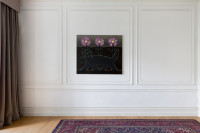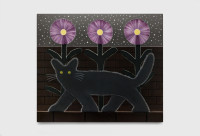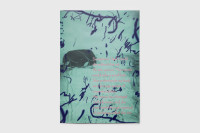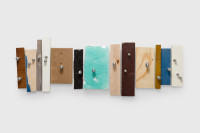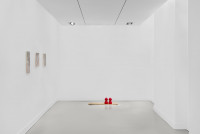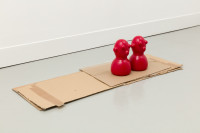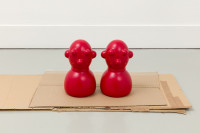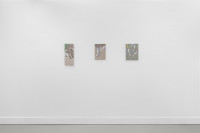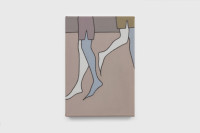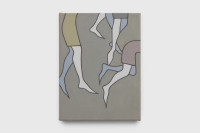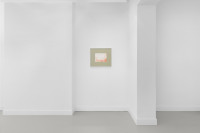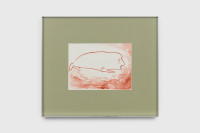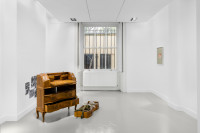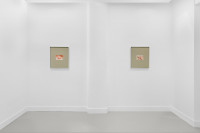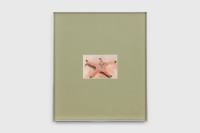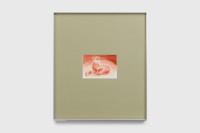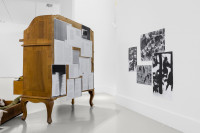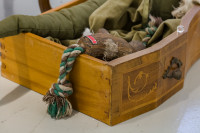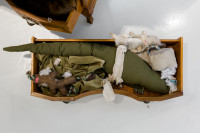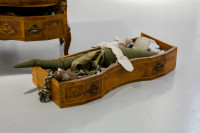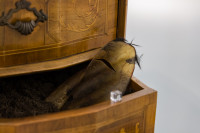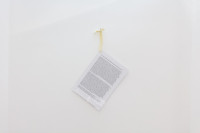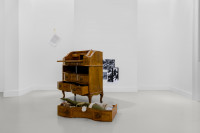Ryan C. Brown, Jack Jubb, Hatty Nestor, Miriam Stoney, Katharina Schilling, Juan Francisco Vera
22.02. — 30.04.2024
Like a Dog
2024
Like a Dog: Some Notes on the Poetics of Analogy in the Canine Oeuvre of Dora
It is with great pleasure that I stand here on the written page to share with you some of the findings from my investigations into a most peculiar being and the textual, or at least text-adjacent work that this creature is said to have created. I should make plain from the outset that our author would take the epithet of “creature” – among others – herself, at least in her written oeuvre. The matter of self-description will occupy a central place in our discussion today, though I will take the liberty of a short circuit now, to adopt for our character a proper name. Documentary evidence of a stable and consistent name is scant, and less still do we have to go by in terms of a functional Rufname – something to be “called” or a specific referent for a certain “reputation” – that would have been used in life, for we do not know for sure who addressed our creature directly and exclusively, and thus no name can be accurately verified. This is not due to lack of material per se but rather a lack of consistency within the material that is known to exist. Generally speaking, discourse concerning creative and communicative animals has upturned a luscious topsoil of slippery signifiers, which would now writhe through the singular body of work that has been unearthed for our examination today. I will not list these other names here for fear of losing grasp of our author’s coherent image: I am going to talk about one, singular canine poet who, at one time or another, or at one time and another, went by the name of Dora. This assertion shall be my historiographical prerogative as well as the creaturely author’s long-awaited entry into a literary archive, and with this, eventually, no doubt, into the canon as well.
I came upon the name Dora not in her poetry – and now that I have introduced the term “poetry,” I should add that this also remains an open question – but in the set of circumstances that would be described in her notes and journals. If these were to circle around a vague moment of departure, they would be hinted at in repeated, isolated turns of phrase, such as, ‘damals war schon weg’ (literally: then was already away) or ‘hin oder her oder hier oder wer oder er oder was’ (approximately: to or from or here or who or he or what). The departure I interpret here accompanies a recurrent process of de- and re-identification for the subject writing. As an author without a given name, it appears to have been necessary for Dora to overlap her own self-narrative – I find myself evading the term “autobiography” for the time being – with the events of another life. The neatest alignment being with that of a woman whose name was also not Dora, but whom we refer to as such, nonetheless. There have been multiple such women, since Sigmund Freud set off this chain of appellation impropre in the case of Ida Bauer, another woman who left, anonymised with the name Dora following the example of Freud’s own sister’s nursemaid – who took the other name as she and the sister were both called Rosa. Women who change their names seem destined to become Dora – the associative function of this, always “the other name,” is significant here and not the etymological roots: these would yield only fool’s gold.
In pursuit of scholarly rigour, I wish now to work towards a few definitions with reference to the documentary, archival and object evidence that I have gathered from Dora’s apparent life. The facts shaping her writing, indeed in the very first instance as a physical exercise, are integral to a broader conceptual understanding of the creature’s oeuvre. Without regard to the way in which Dora was able to appropriate the language of Homo sapiens for her own creative output, we cannot hope to grasp the form or content of which this consists. Here, I turn to the artefacts on display, listed below – they constitute the most accurate representation of Dora’s scene of writing that we can hope to attain, though the current configuration does leave some matters unresolved, and I hope that my first exploratory investigation into the mechanics of her writing practice will pave the way for future research into canine literary contingencies more generally. That is to say, I welcome refutations and reassemblages of the present material, and grant that my thinking regarding the placement and use of the respective objects is most probably clouded by an anthropomorphism that would model Dora’s poetry on activities as banal as my own occasional jottings using metre and verse. The less said about these, the better.
Here I will admit that my primary source of information, or perhaps better: inspiration, with regard to how the animal subject might grasp a human language, has been the fictional writing of Franz Kafka. While I will not map Dora’s trajectory one-to-one onto that of Rotpeter’s way into the scientific community, as narrated in “Ein Bericht für eine Akademie,” I can only conceive of Dora’s gradual acquisition of language through mimicry, trial and error, and ultimately, analogy. Unlike Rotpeter, however, whose linguistic accomplishments are primarily verbal, having been gained through the will to find an escape from the intolerable situation of captivity, it seems that Dora rarely departed from the realm of the textual. She perhaps saw no existential threat behind her but merely trotted off a dog’s habitual course into the vast landscape of words. And she has remained there; I see no way of freeing her from this place now. In her personal archive of references, there are numerous photocopied pages from poetry anthologies, critical theory and narrative prose, among others. Interestingly, she seems to make little distinction between writing in English and writing in German. The primary act of translation that Dora can be seen performing in her work is that of transcription: using a defunct laptop and a pair of bespoke typing gloves fitted to her small paws, she copied passages from these texts letter for letter, character for character, line for line. The laptop being defunct, this was but a fruitless training exercise, and yet it was to prove the perfect preparation for the work of writing poetry in a creaturely mode.
I have now qualified the designation of Dora’s quasi-textual output as being ‘in a creaturely mode.’ And what precisely does this mean? I’m not entirely sure. I would start by saying this is a human designation of an animal’s work. Work? Do animals work? It is practically impossible to give a reading of Dora’s texts without acknowledging the veil of all human hermeneutics, the delusional conviction about their very existence. Every term I use in this context is an imperfect mapping of concepts onto a radically other ontological framework. We must keep this in mind as we progress into the depths of unknowing, our cartographies having been written before Dora’s literary adventure had even taken place. When I characterise Dora’s work as having been undertaken in a creaturely mode, what I am trying to say is that it entails an investigation into being avant la lettre. One would read in the work a preoccupation with the possibilities of existence when one’s existence is negated by the medium itself: Dora could no longer be a dog once she penned the first sentence, or from the moment she linked two words together to make something like sense. It is primarily for this reason that I refer to “the poetics of analogy” in the subtitle of this lecture. “The poetics of analogy” is intended to connote a generative parallelism with another form of language, whereby reference and comparison is utilised to represent an adjacent phenomena, similar but different to the object held up for inspection.
There would be ample evidence in the texts themselves of Dora’s reliance on analogy as a means of representing her own thoughts, feelings and ideas. The most salient example would certainly be the conspicuous recurrence of a certain phrase, which in its banality elides the tragic loss of dogly self that Dora would have undergone as soon as she tried to pen her condition. The words ‘like a dog’ would persist throughout her work; as a simile, creating an indelible link between that which she describes and the canine reference – this link would defy any perfect assimilation of self and comparative other. Dora is only like a dog, she only resembles a dog, she behaves as though she were a dog, and though she once was, her writing tells us that she considers herself as such no longer.
The analogy that I bring forth here bears additional weight with regard to Dora’s biography, of which little can be certain, and nothing verified. This must be one of the primary reasons why this admittedly ethereal body of work has been given so little attention to date, in spite of its obvious novelty and originality. Dora’s contemporaries were also unwilling to recognise the exceptionalism of her creative endeavours, tending instead to see her performativity as something more proper to a circus or zoo than any spaces serving the literary canon. Had her texts been read without knowledge of their author’s species, publications in journals would surely have followed. It is presumably this lack of recognition that prompted Dora to leave her surroundings over and over again, and it is the departure as a narrative twist that often steers her poetic narratives. She would draw parallels with other ‘women who leave’ as she named them, including her namesake, whose termination of her analysis under Sigmund Freud was to be the defining act of her existence under that very name. In one poem (all are untitled), Dora may have written:
[…] there is no prodigal daughter because a woman
who leaves would never come back yours, but
perhaps hers and her and like a dog, a little
less tame, a little more capricious, this time.
What could be noteworthy about these lines is: the awareness of Biblical narratives and archetypes, and the fruitlessness of any attempt to subvert them; the astute perception of Woman as a fragile ideal; and the repercussions with which any misdemeanours on a woman’s part are to be met. Dora, though a nominally female dog, did not seem to consider herself a woman among women, but instead saw their fates interrelated by a shared status of alterity.
This open acknowledgment of difference enables Dora to write convincingly of her own experiences as akin to those of the women she observes in her Umfeld, just as she can relate her animal existence to the life of the housecat or to the painful slaughter of a cow. It is difficult to evaluate the poetic output of Dora with reference to beauty, wit or technical demeanour since these are not the categories of value through which the work distinguishes itself. In many ways, the work is an impractical demonstration of what we might usually consider poetry to be, or rather an empirical deconstruction of poetry’s limitless potential. This is seen most poignantly in the way Dora collected, arranged and stored objects and artefacts in her escritoire – a process that would be mirrored in her arrangement of words on the page. That I choose to include these objects, including other texts and images that inspired her, in what I consider her poetic oeuvre is not as illogical as it seems, since the medial complexity and elusiveness of her work actually leaves us with relatively little written material when everything is considered as a singular body of work. The analogy that I referred to previously takes place not only within the framework of textual reference but also within the structural network of poetic activities – using a dried cow ear to evoke a deaf ear, for example, Dora pre-empts the oblivion that awaits her.
I have hinted as the methodological problems with which any historian or theorist must grapple when considering the work of an author who does not fit neatly the image that we might usually have of a such a person. The challenges are almost insurmountable when there are no texts to which one can refer one’s analyses. Still, I persist. If my thoughts on Dora’s work are inadequate, let my one contribution to poetic knowledge be simply the recollection of Dora’s existence – I have put my whole self into this project.
Miriam Stoney, MA, MA (Oxon)
An Entirely Objective Legend
(1) if you lie a sheet of paper to be written and forever not read
(2) Beißhemmung the next necessary shame
(3) these are tiny socks to fill bit in them no slippage
(4) all the figurative elements recede to the dark
(5) and all the fragments of my intangibles rise to the surface when shaken
(6) def ears
(7) a shrine to destructive tendencies, the cause of becoming
(8) text
(9) the other dog's thoughts are no longer, silent to us now
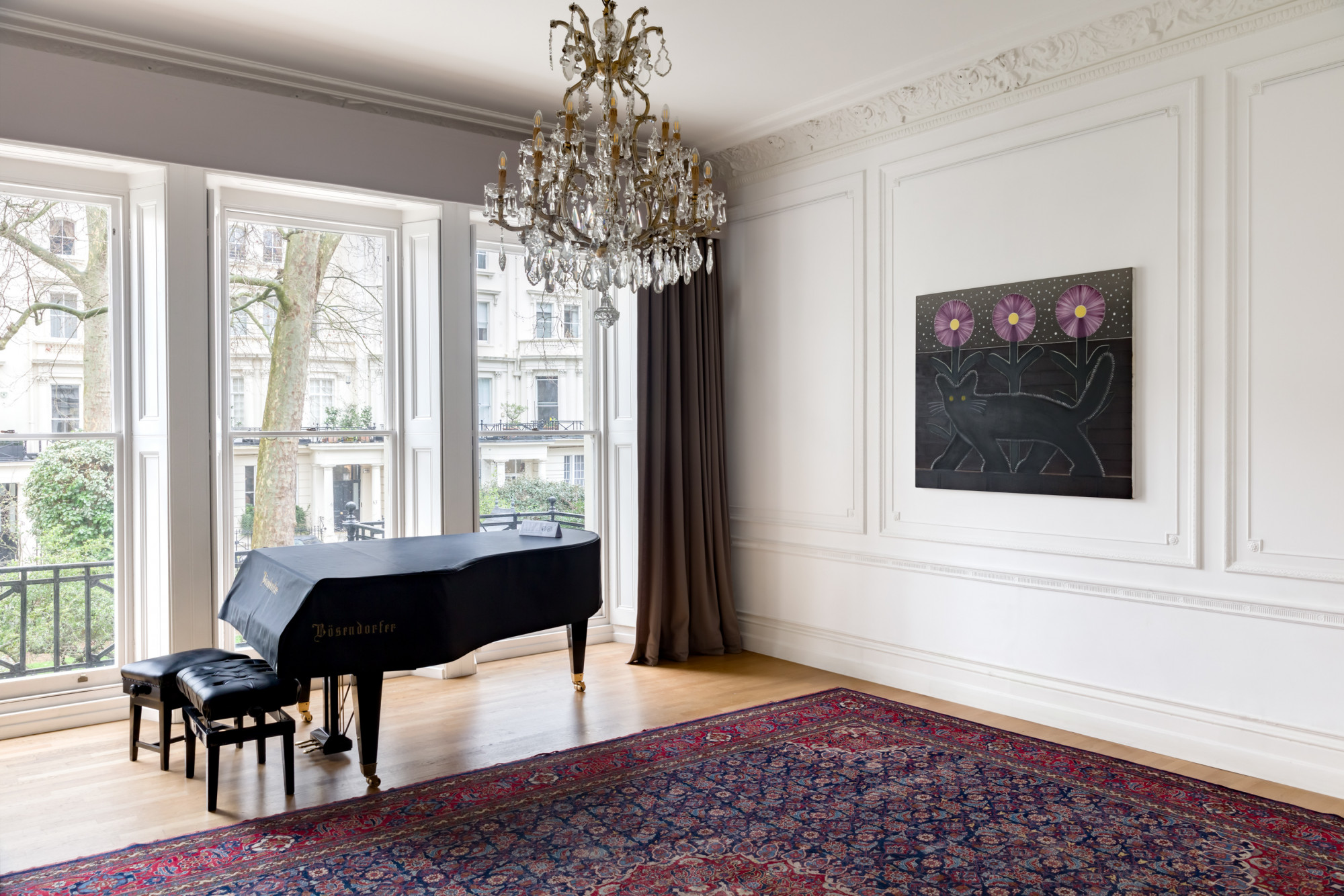
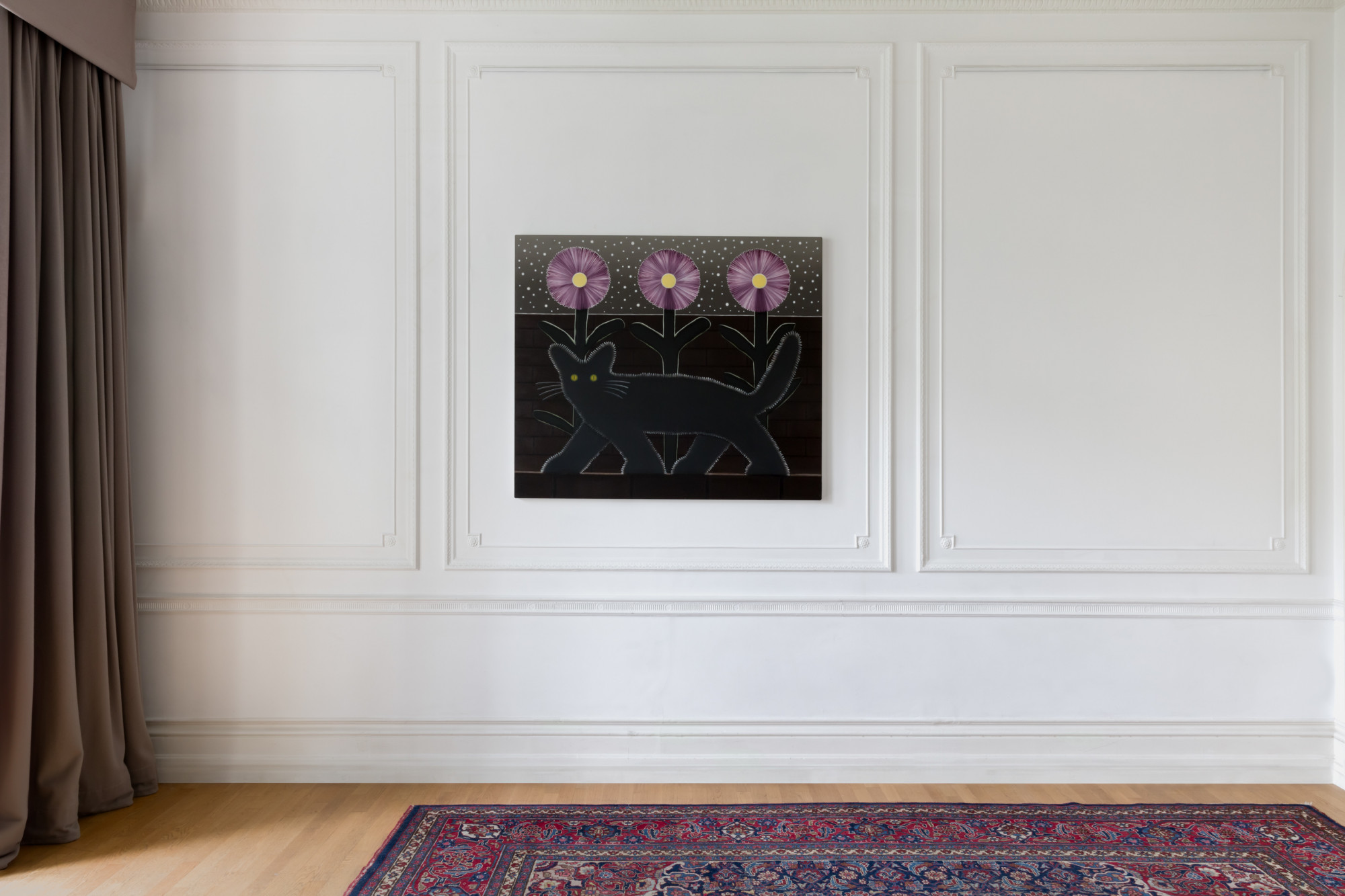
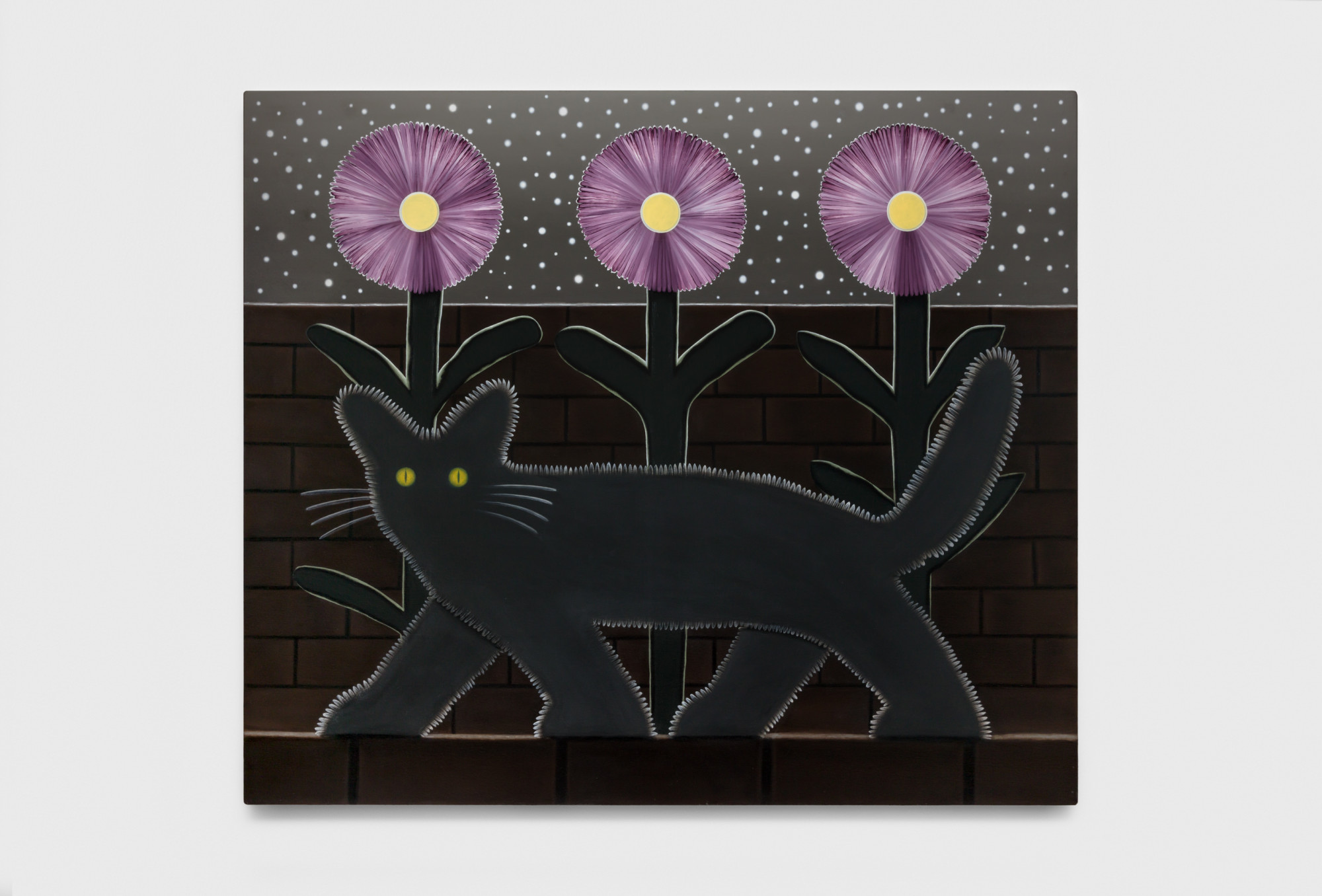
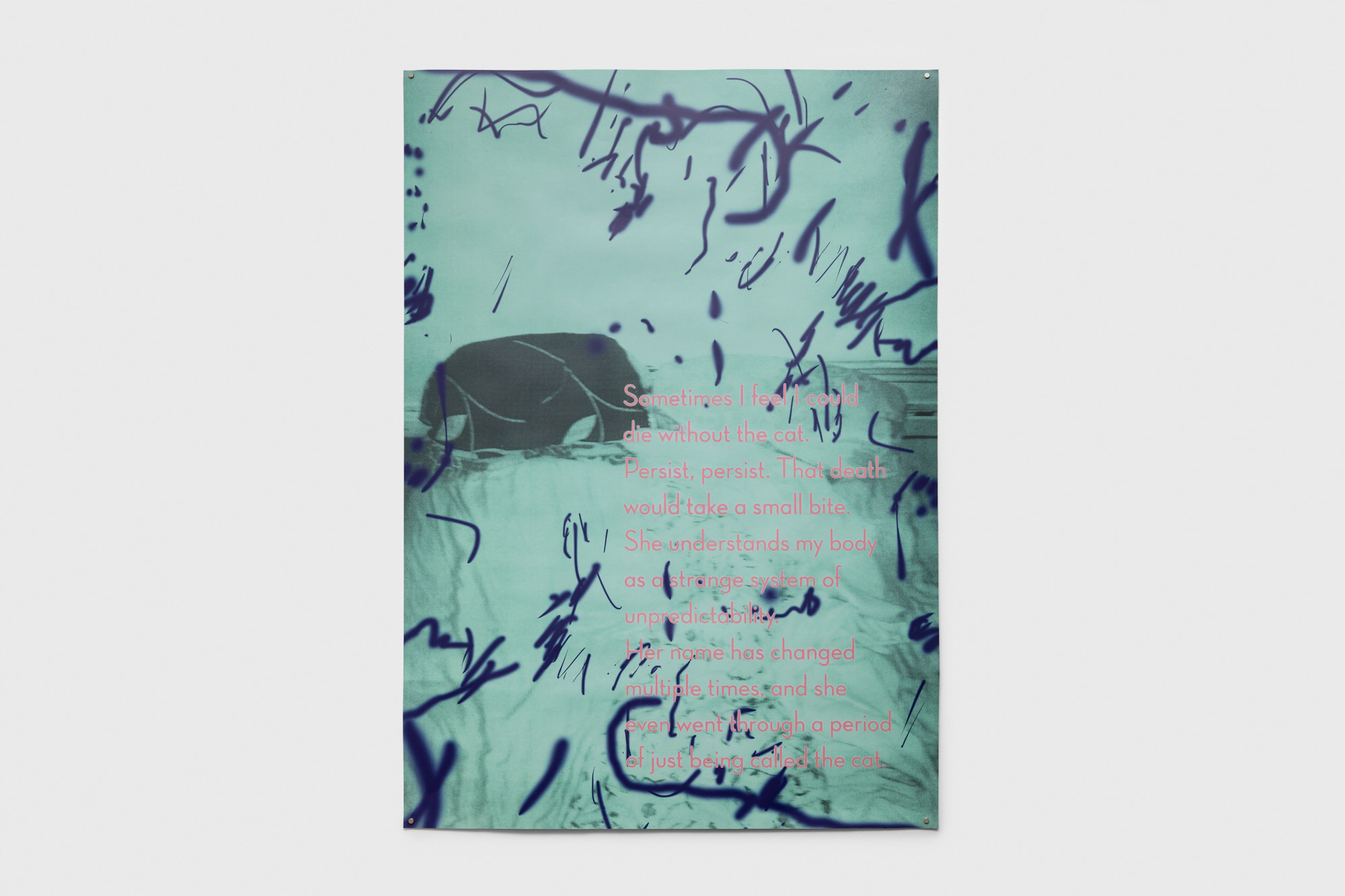


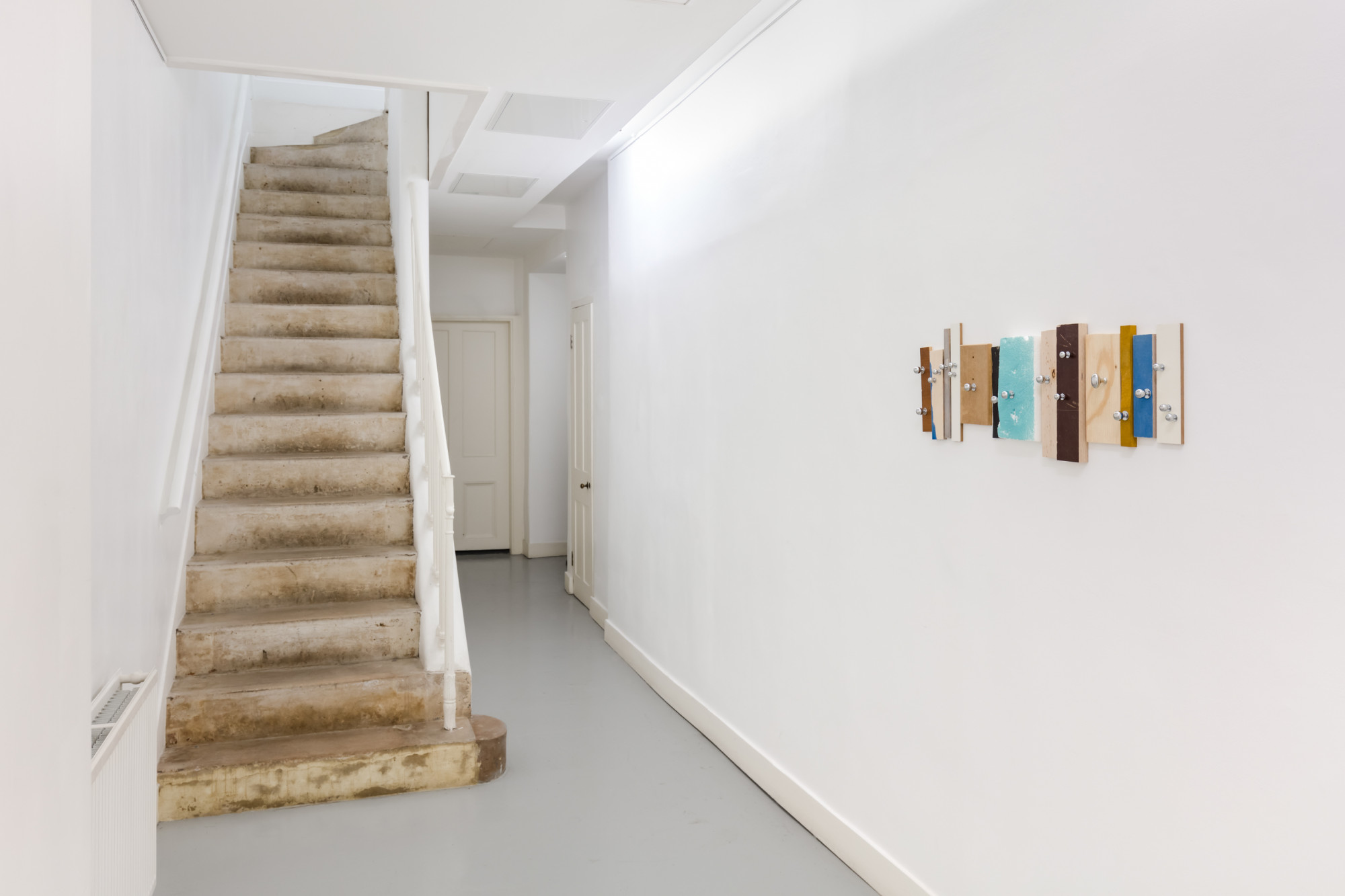
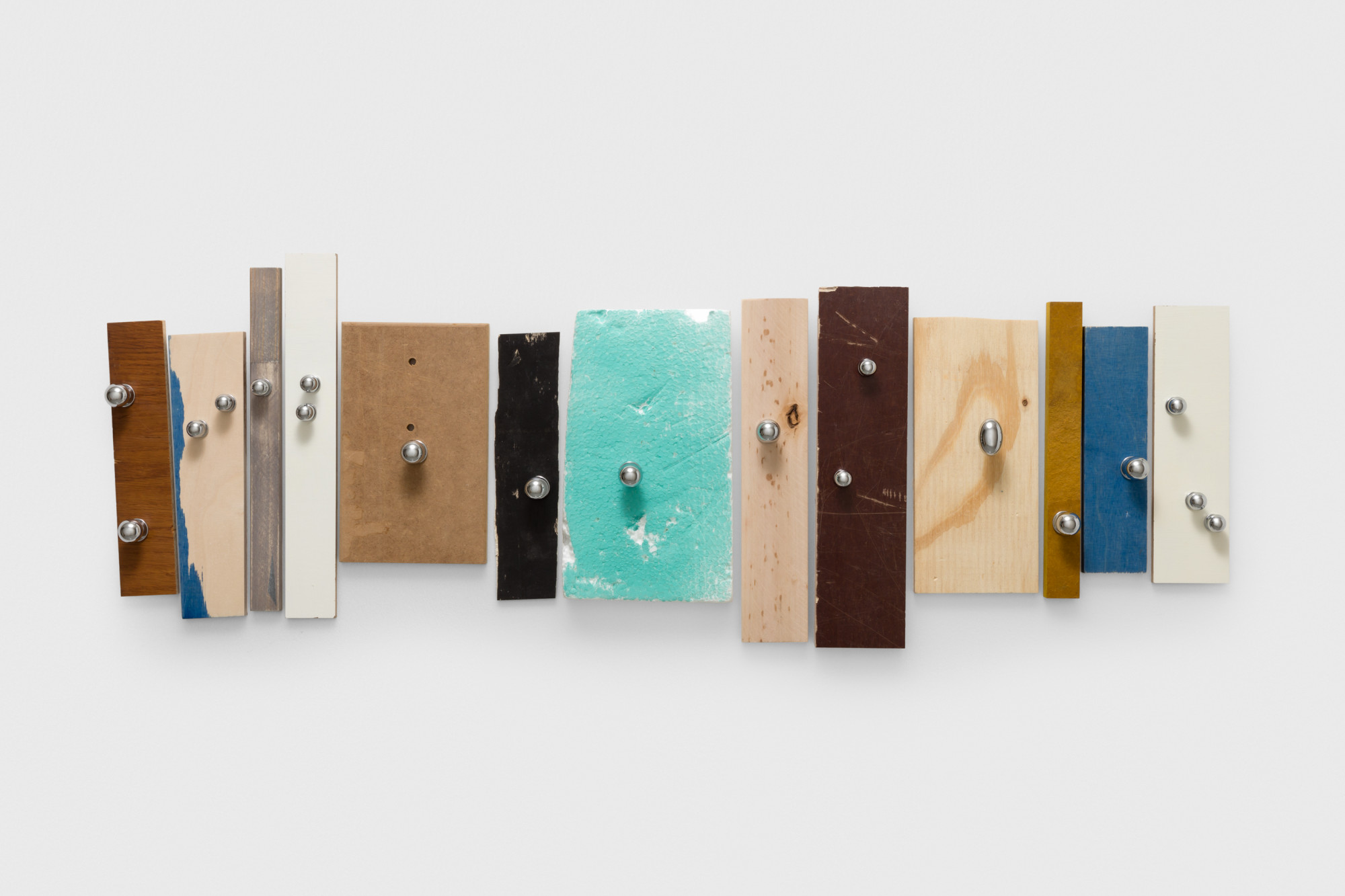
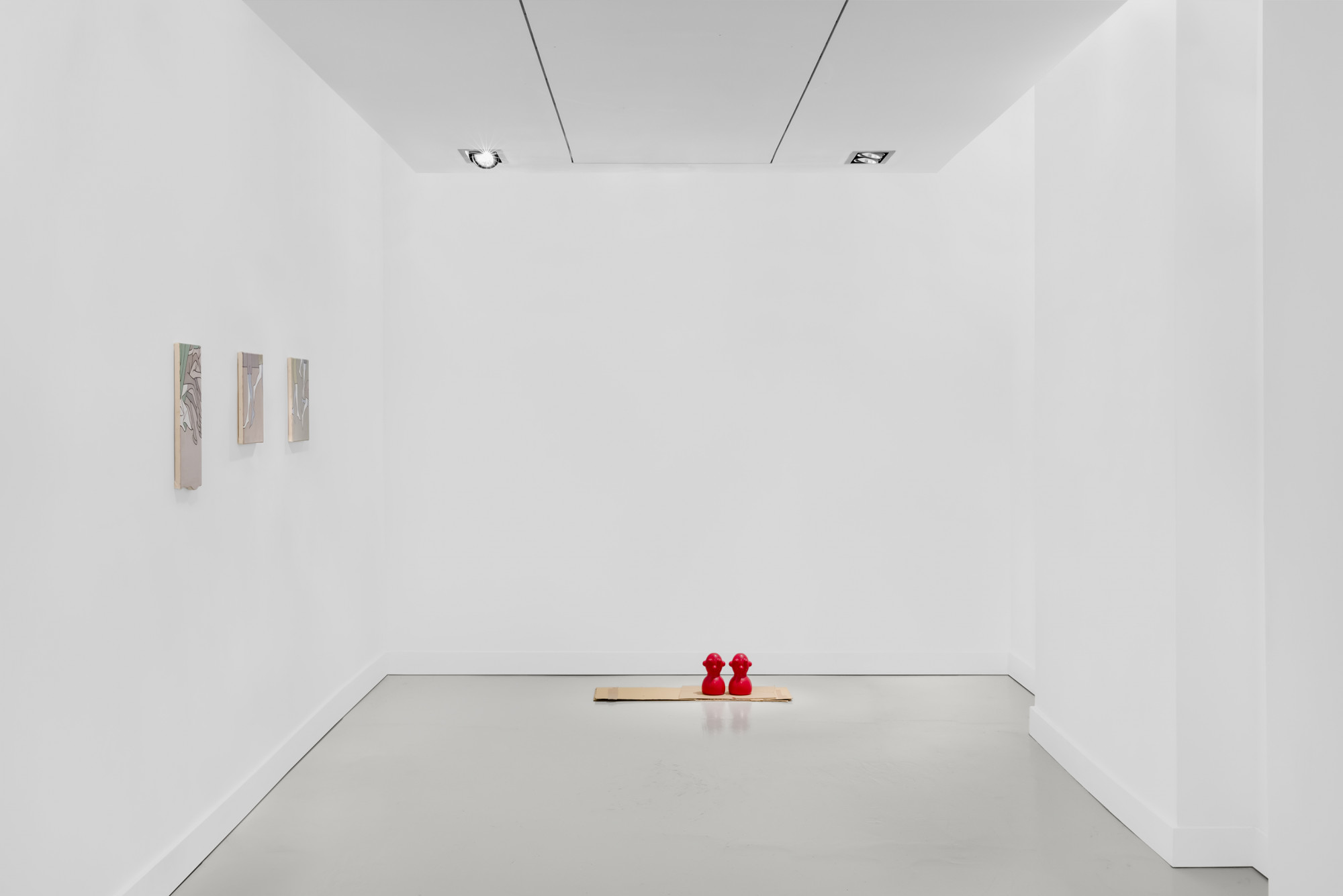

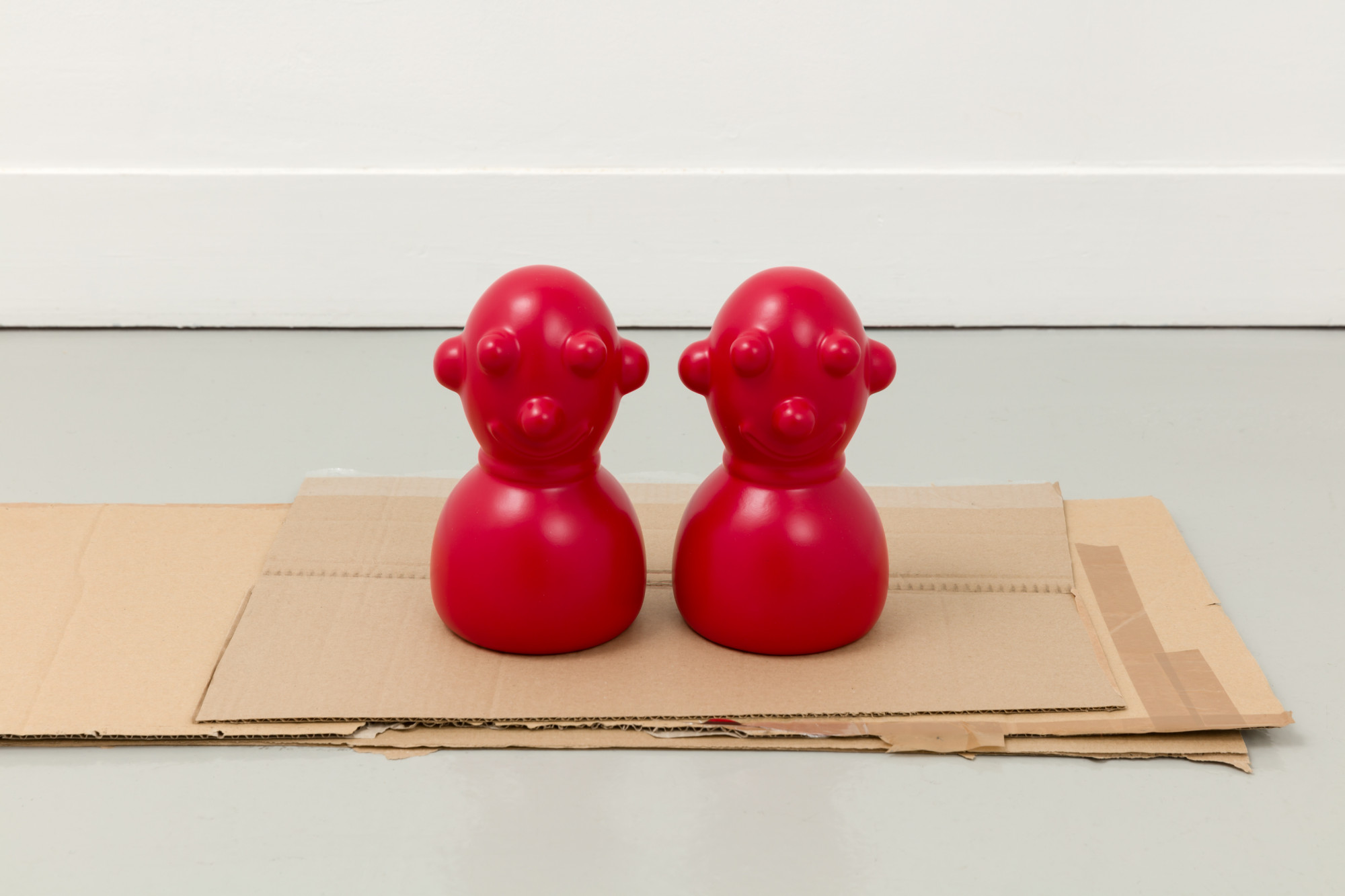
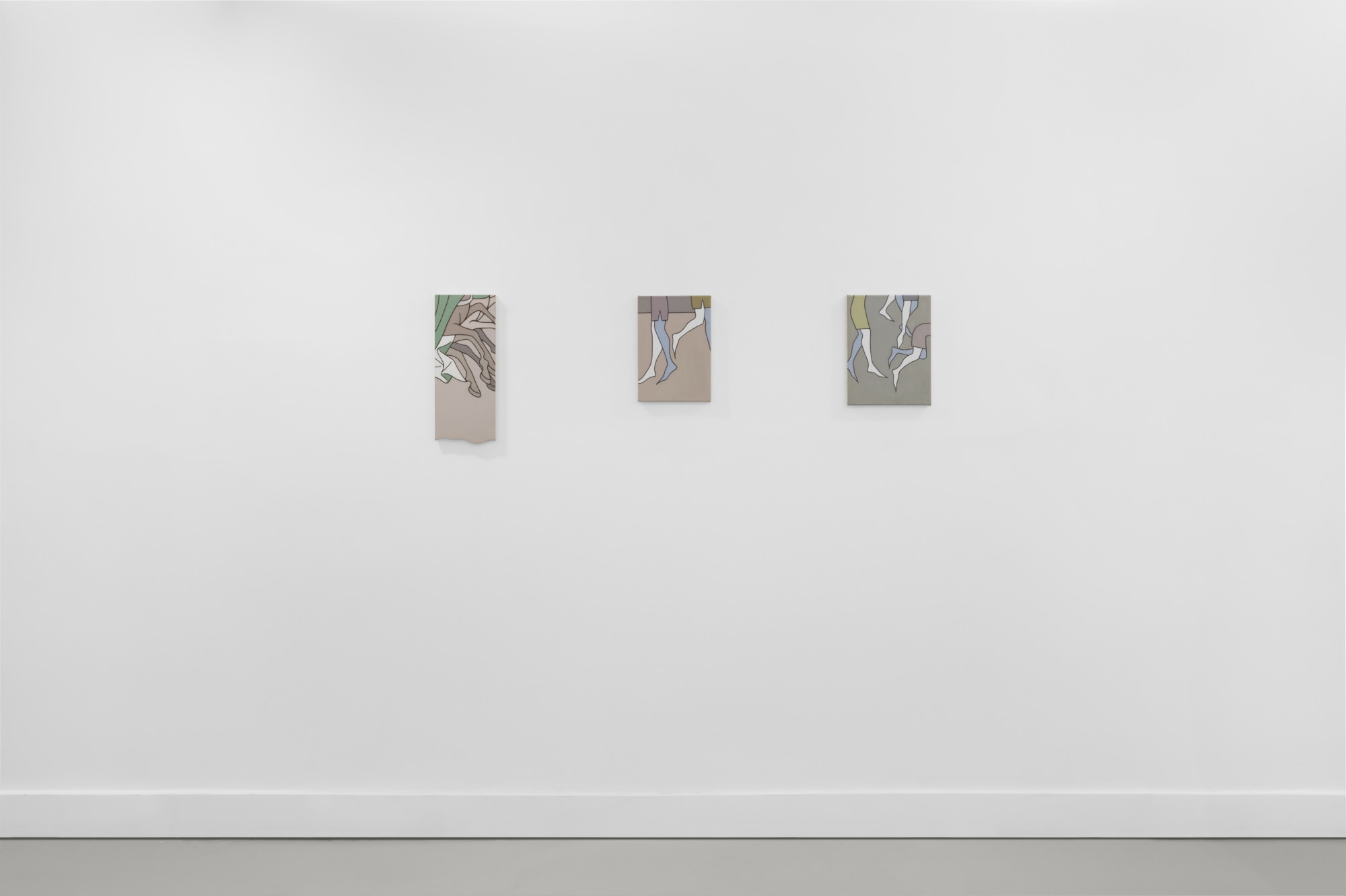
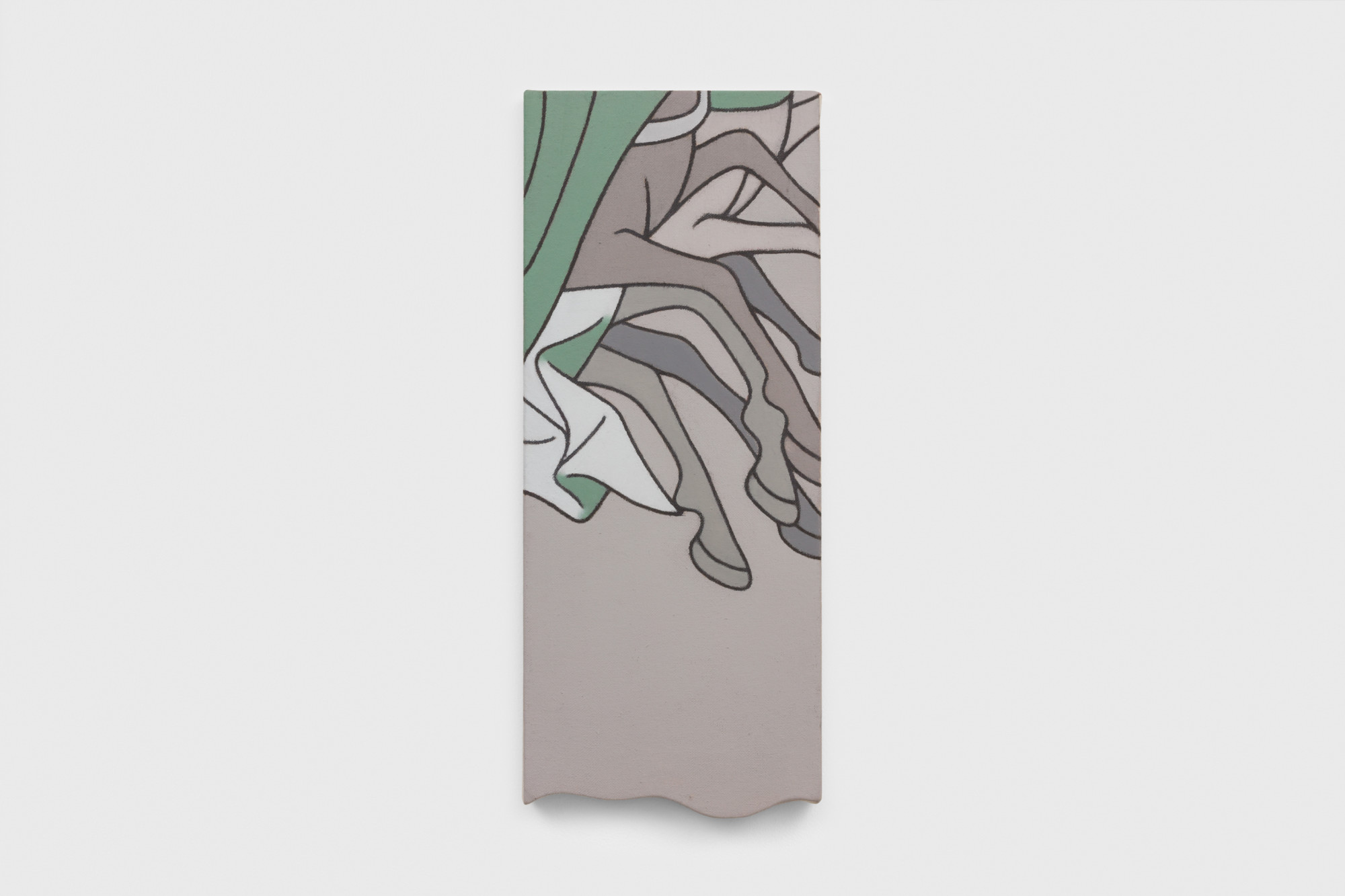
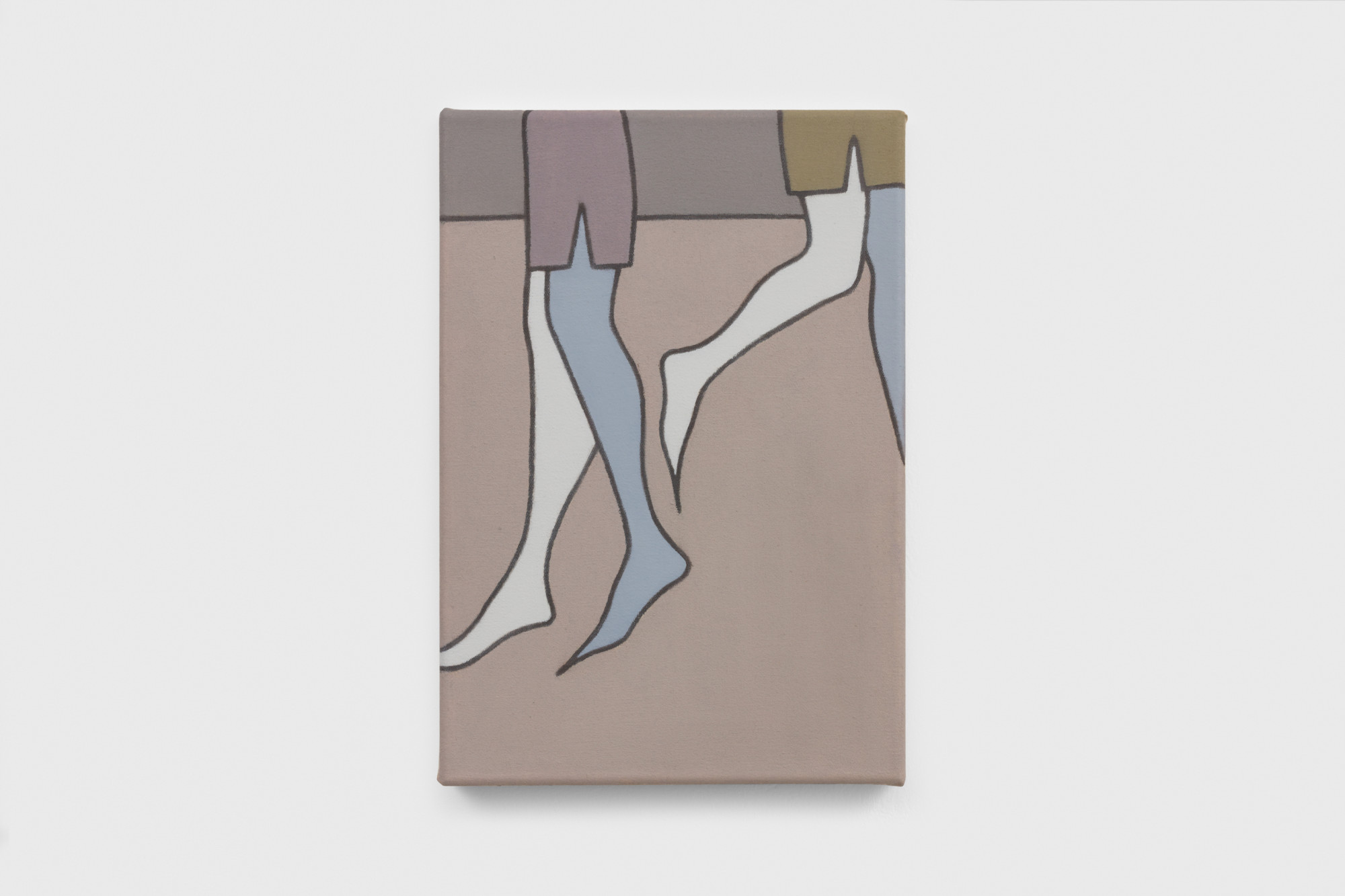
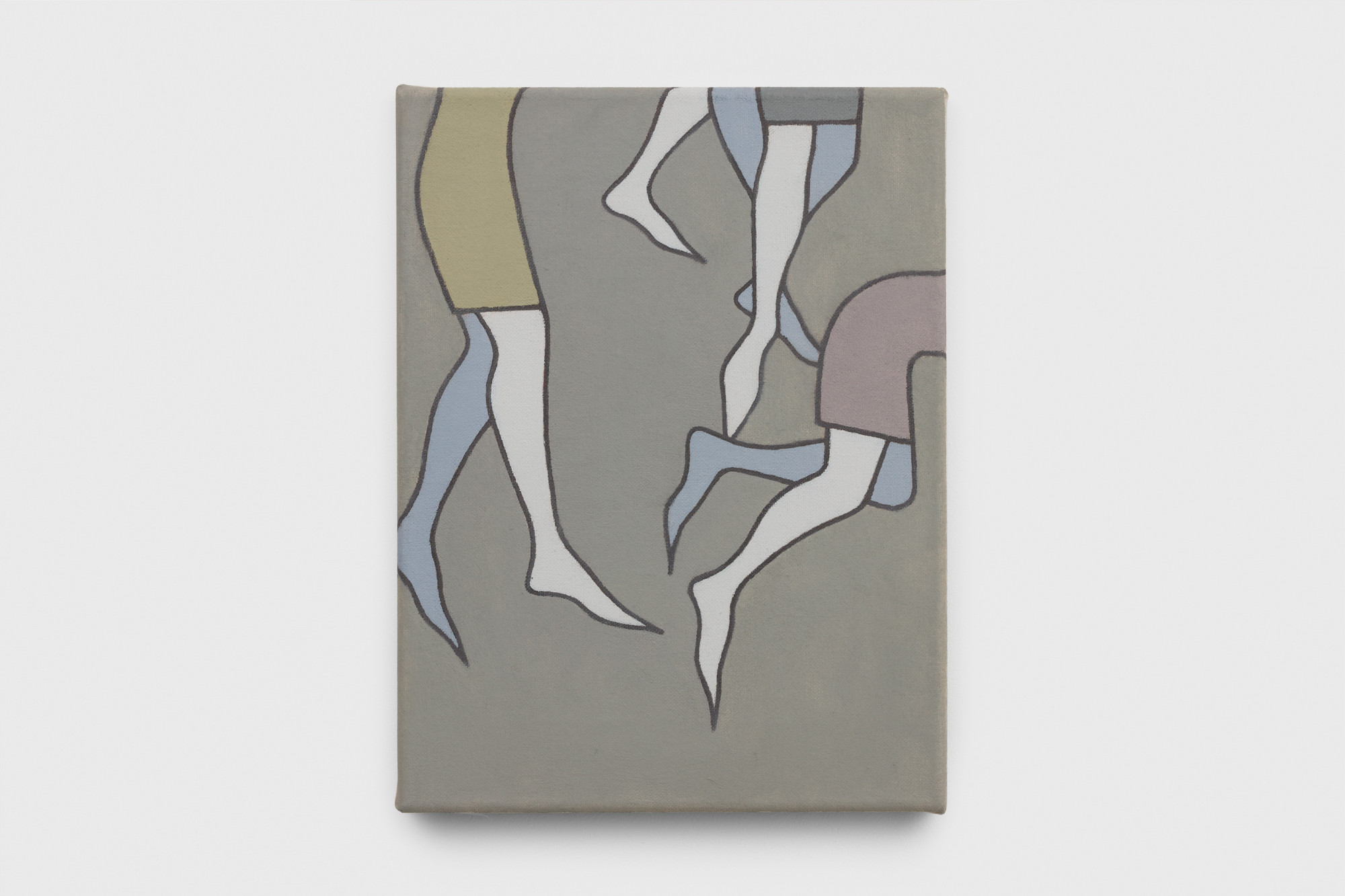
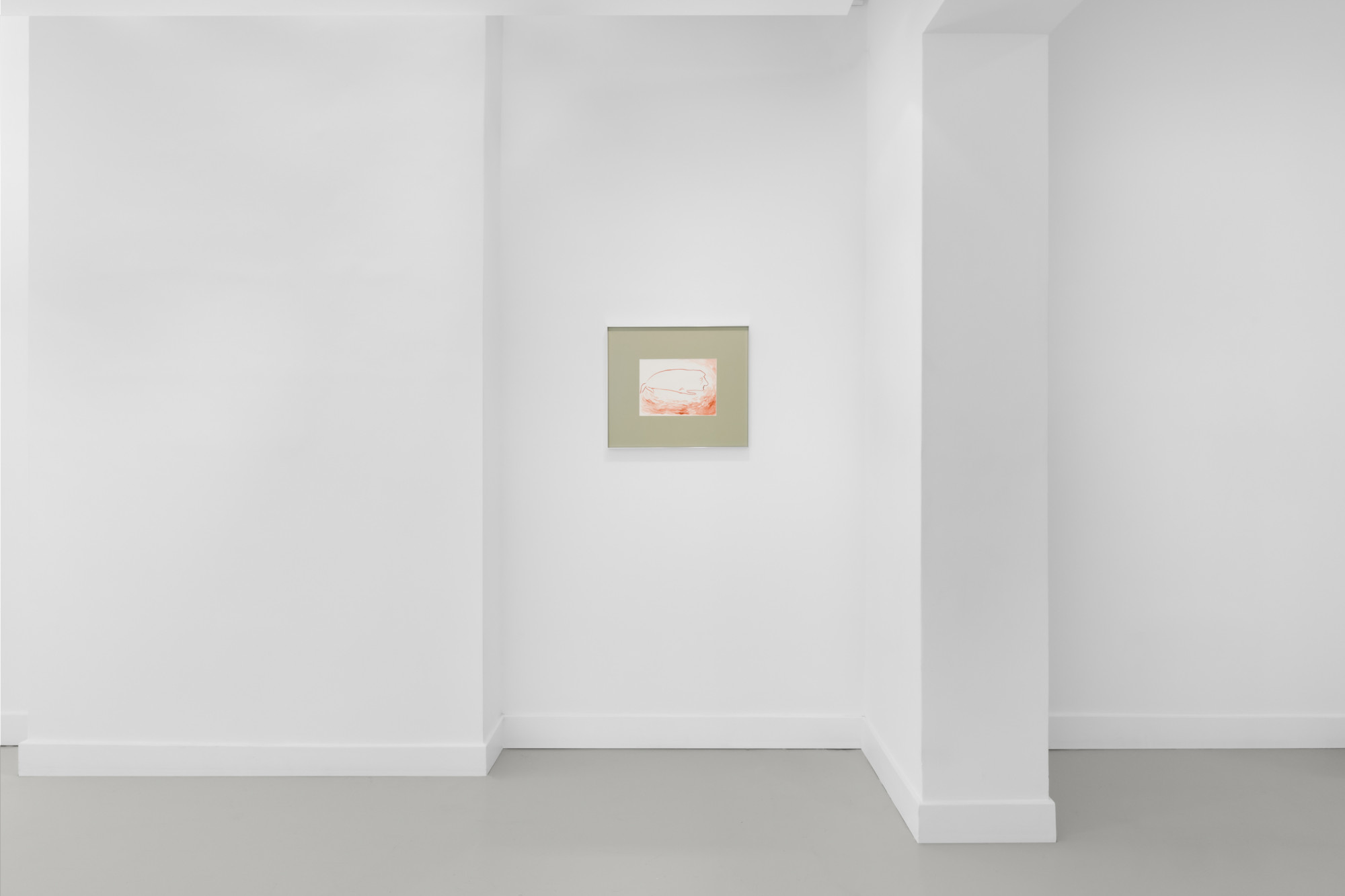
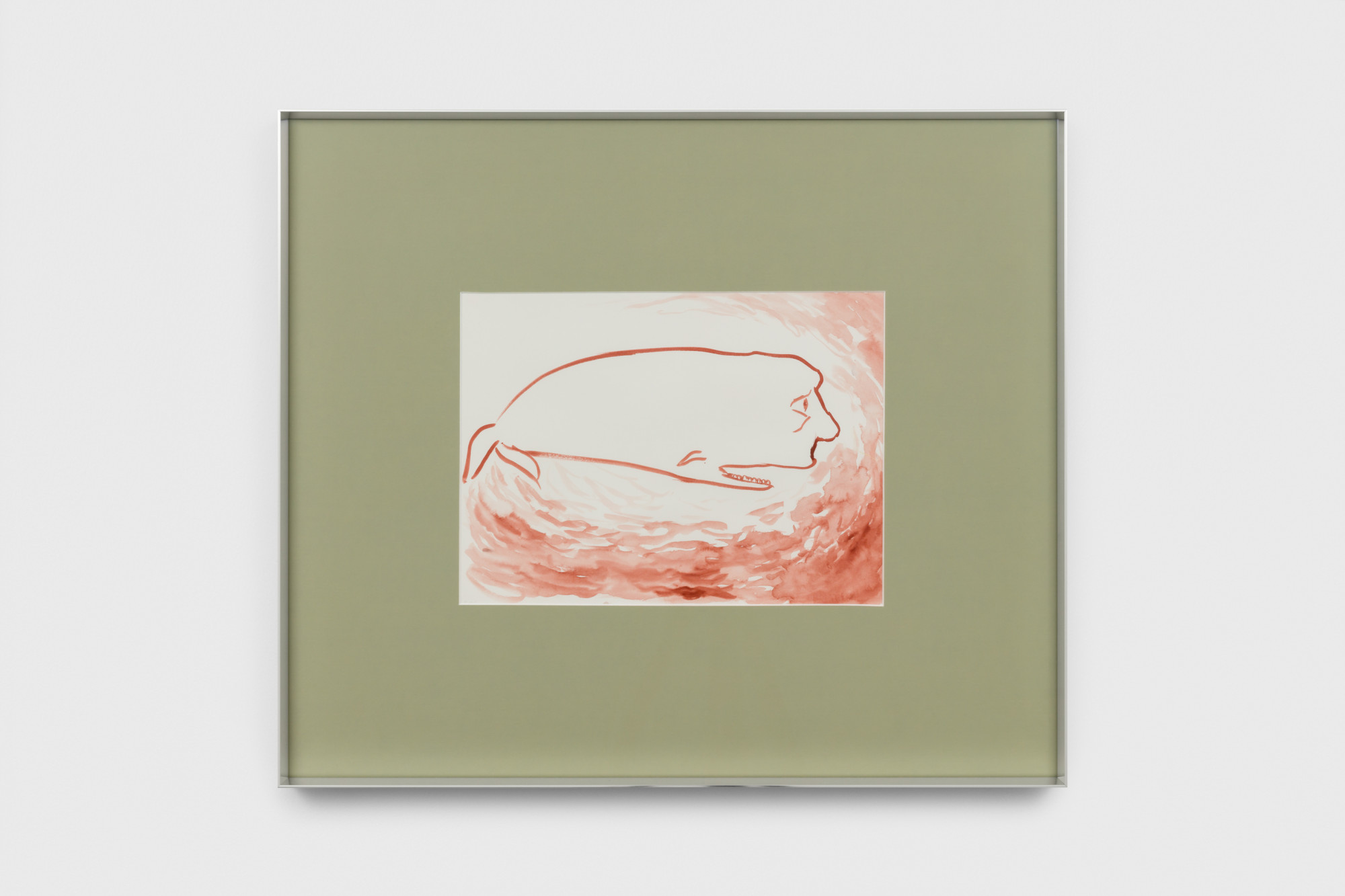
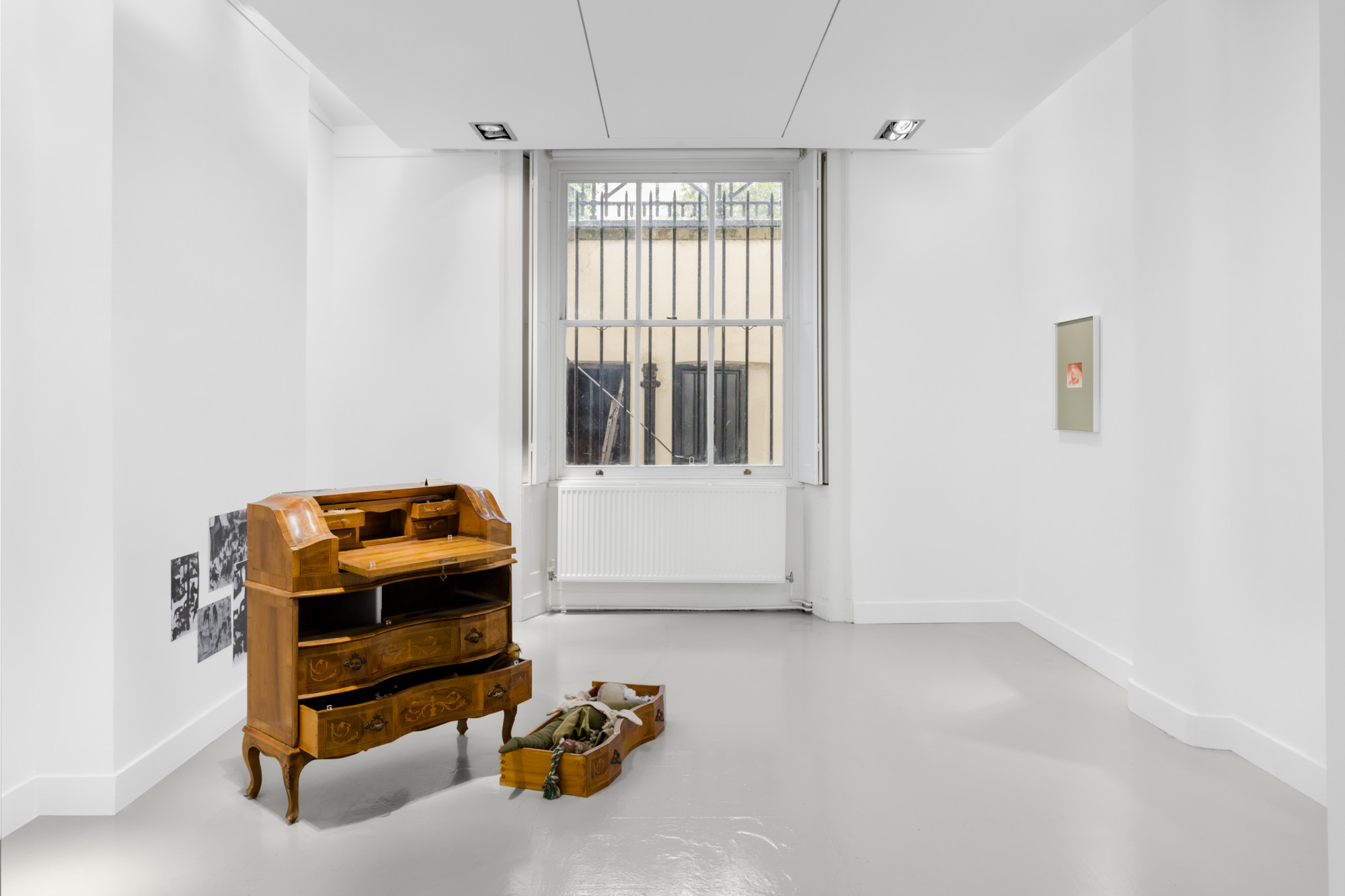

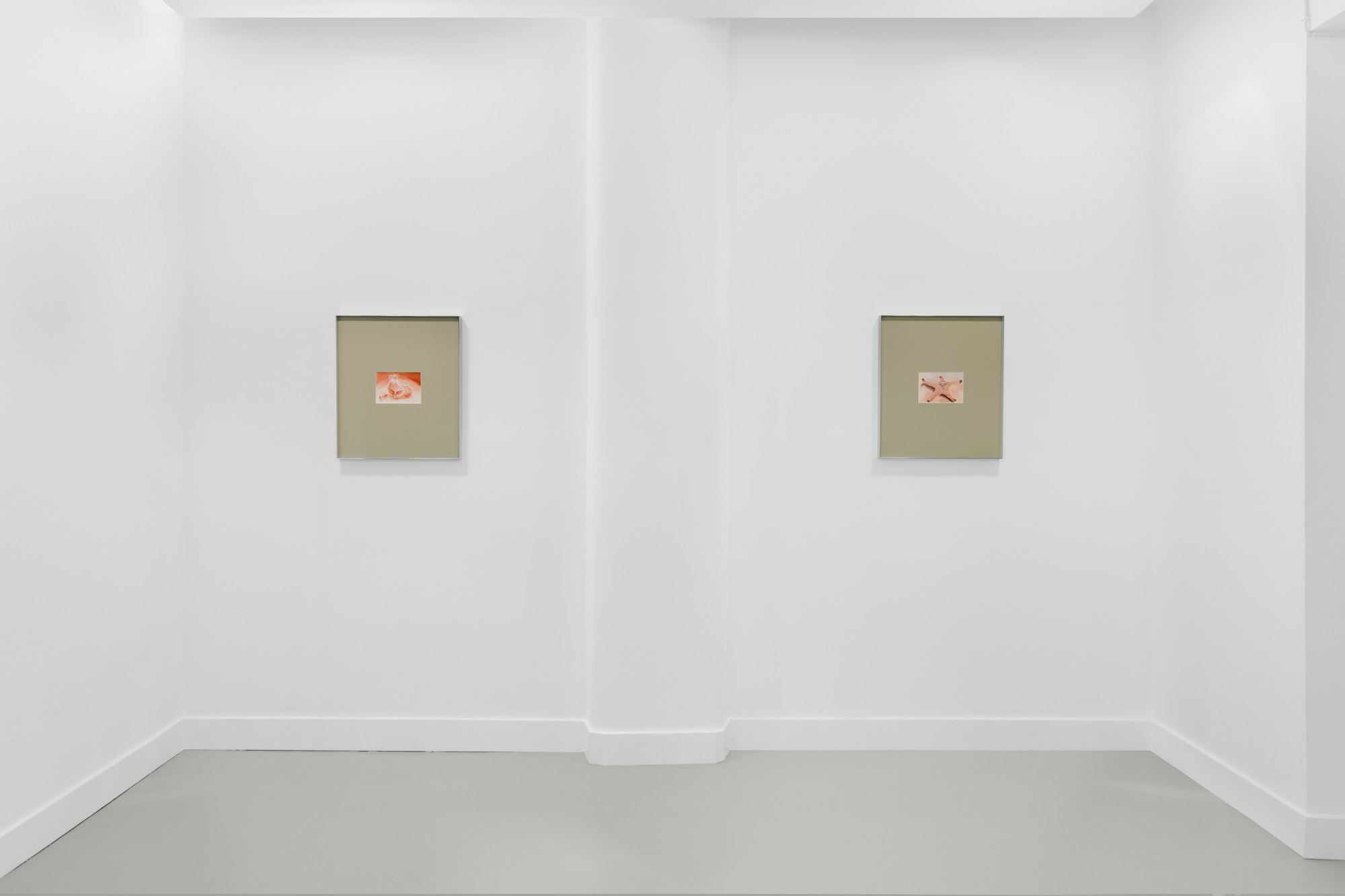
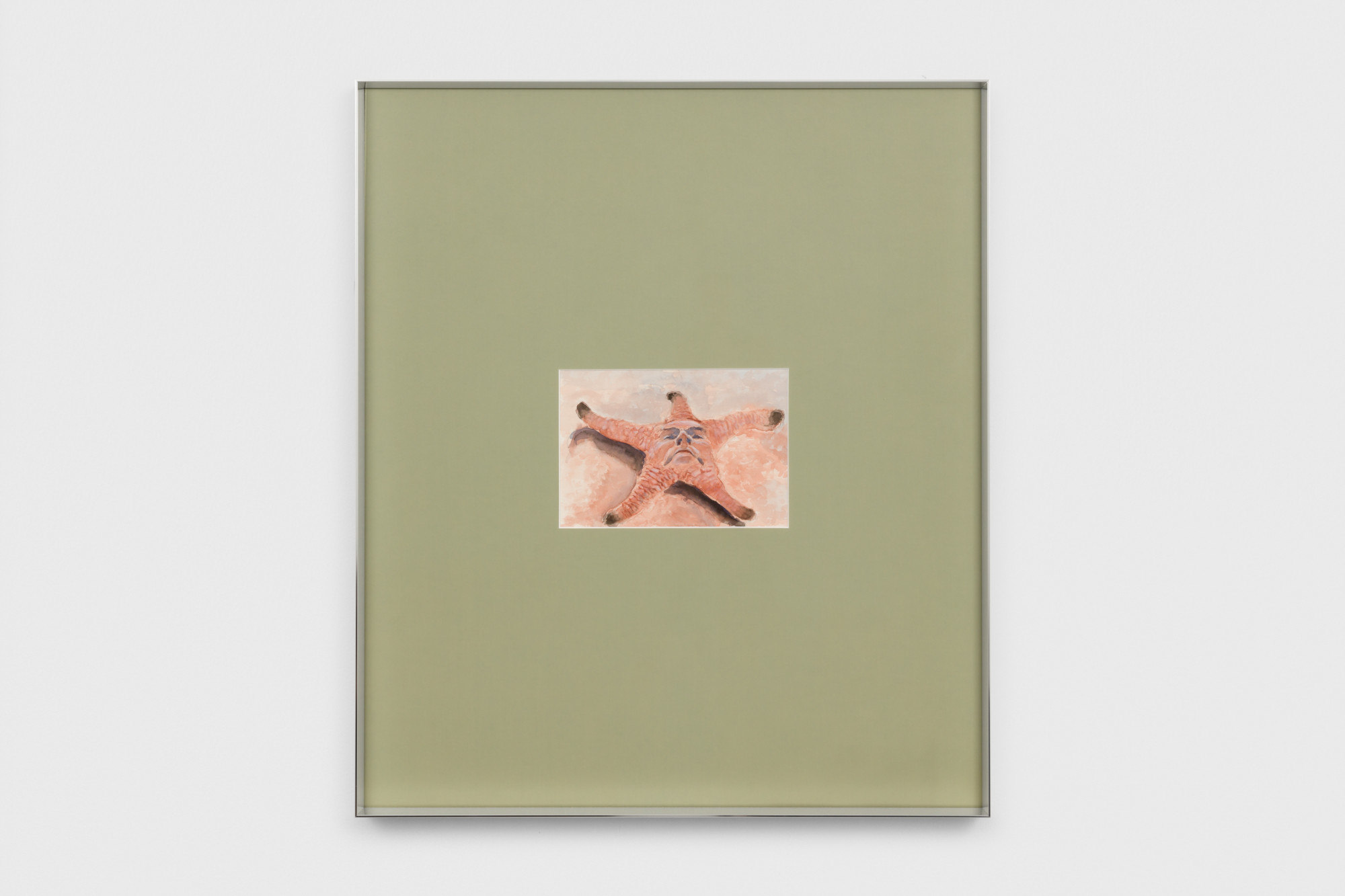
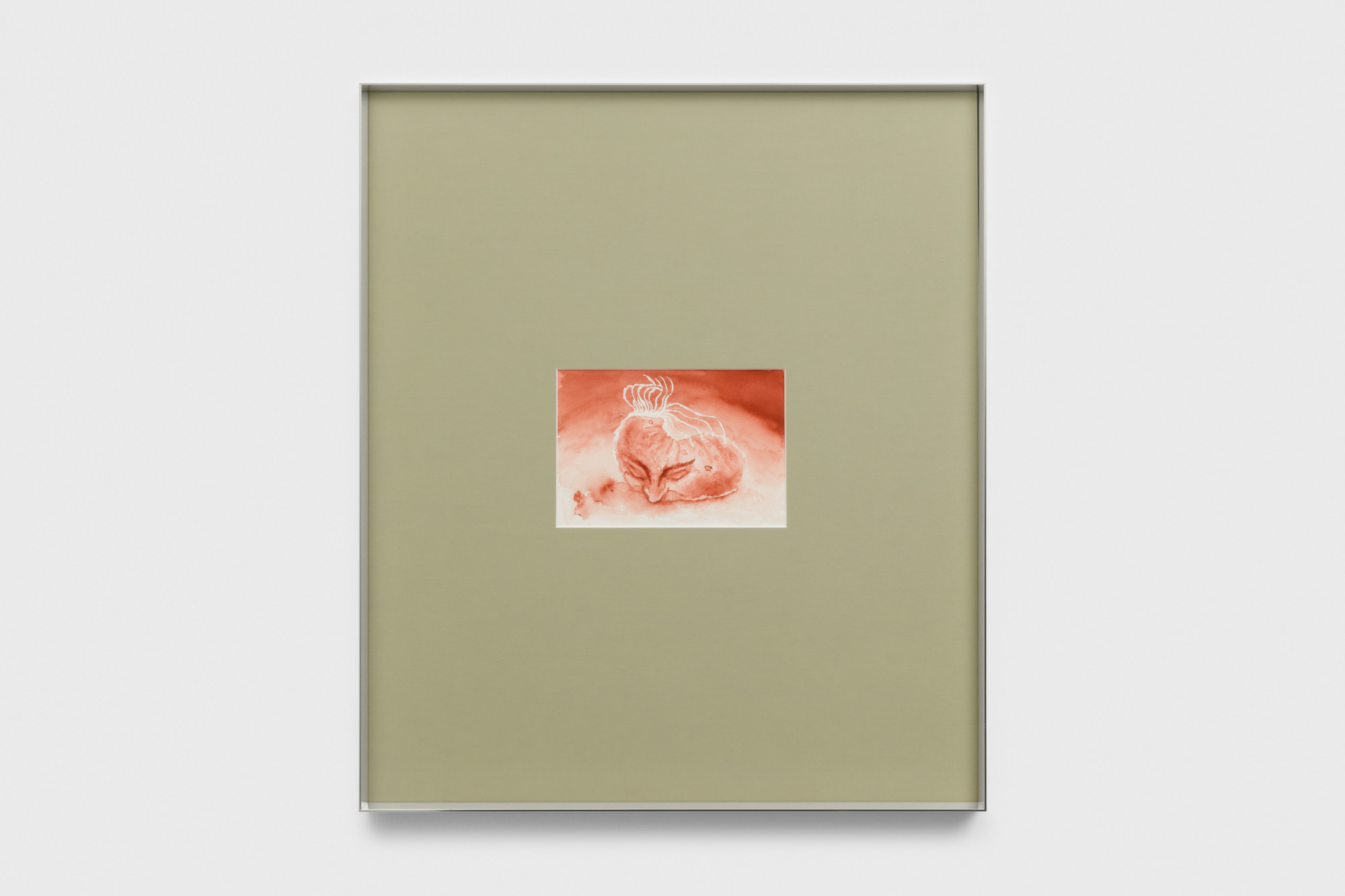
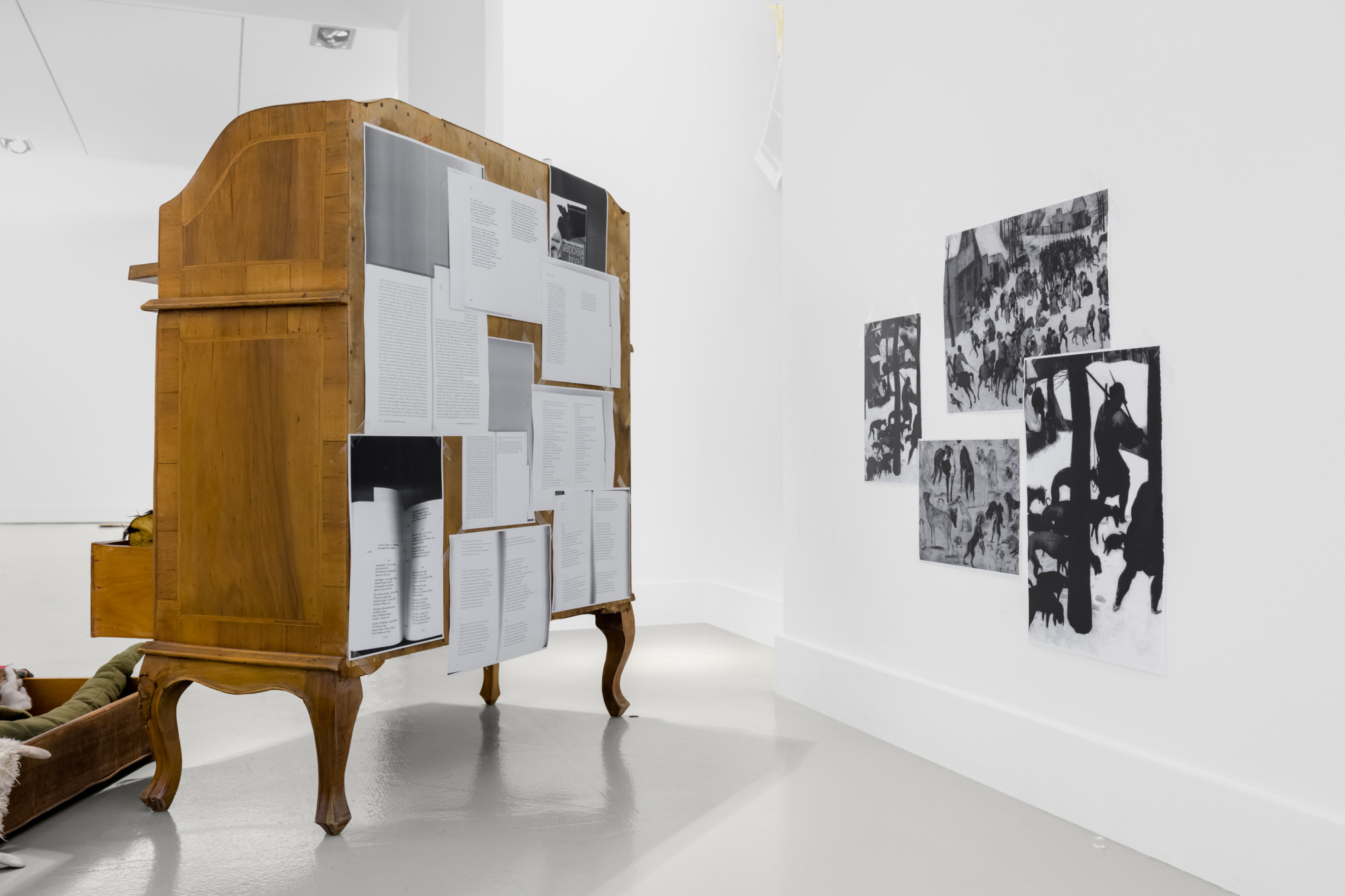
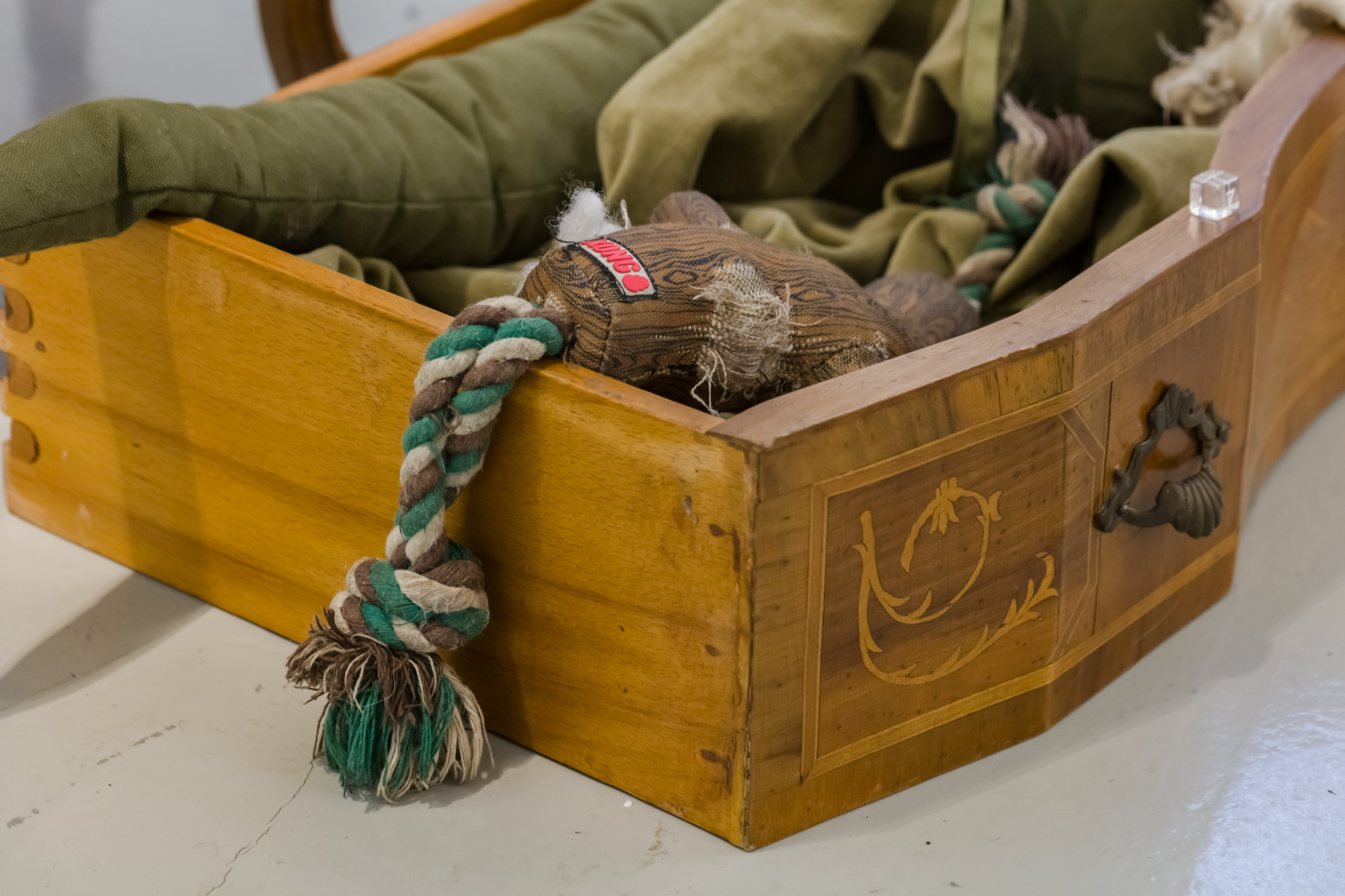
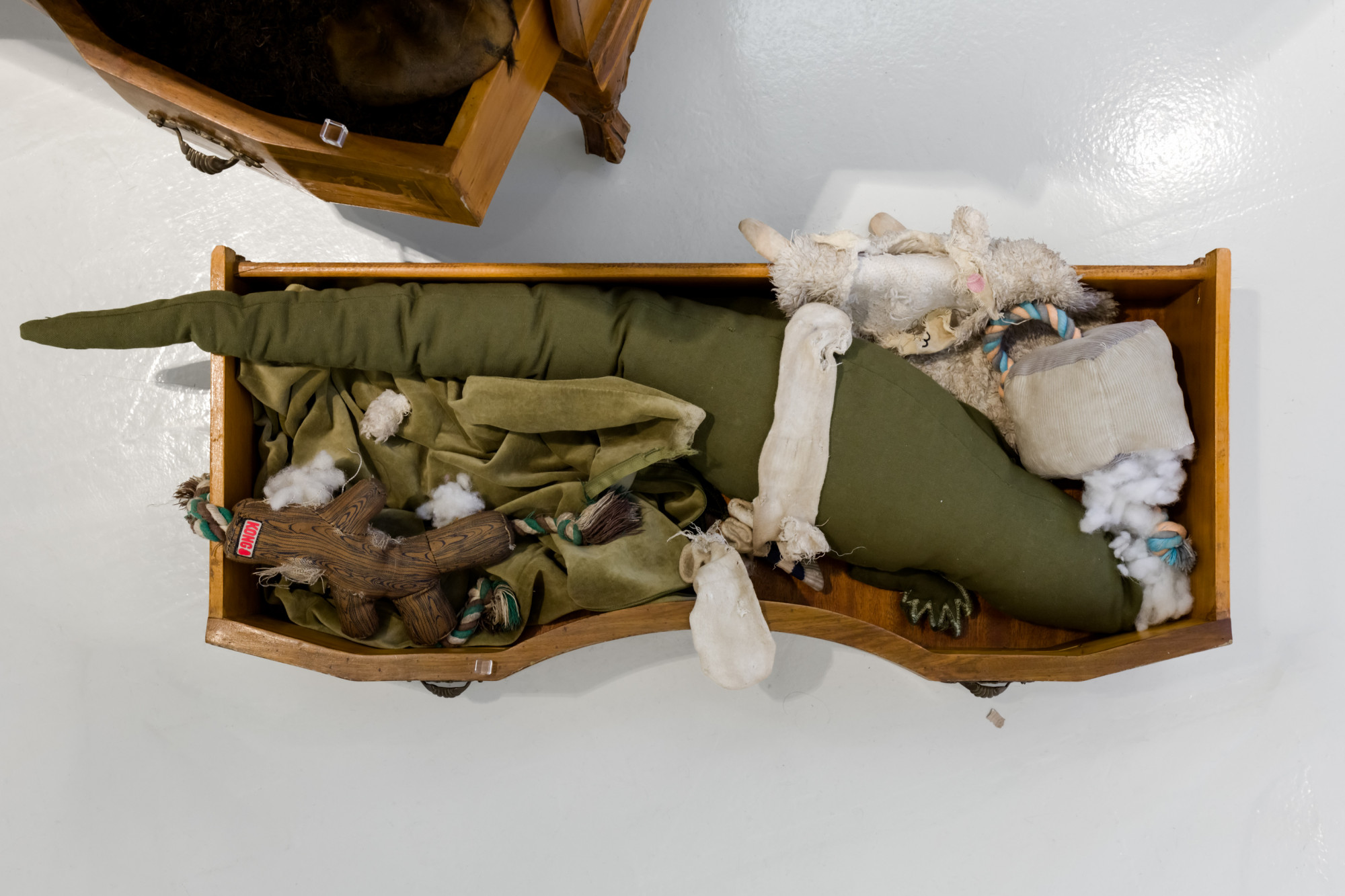
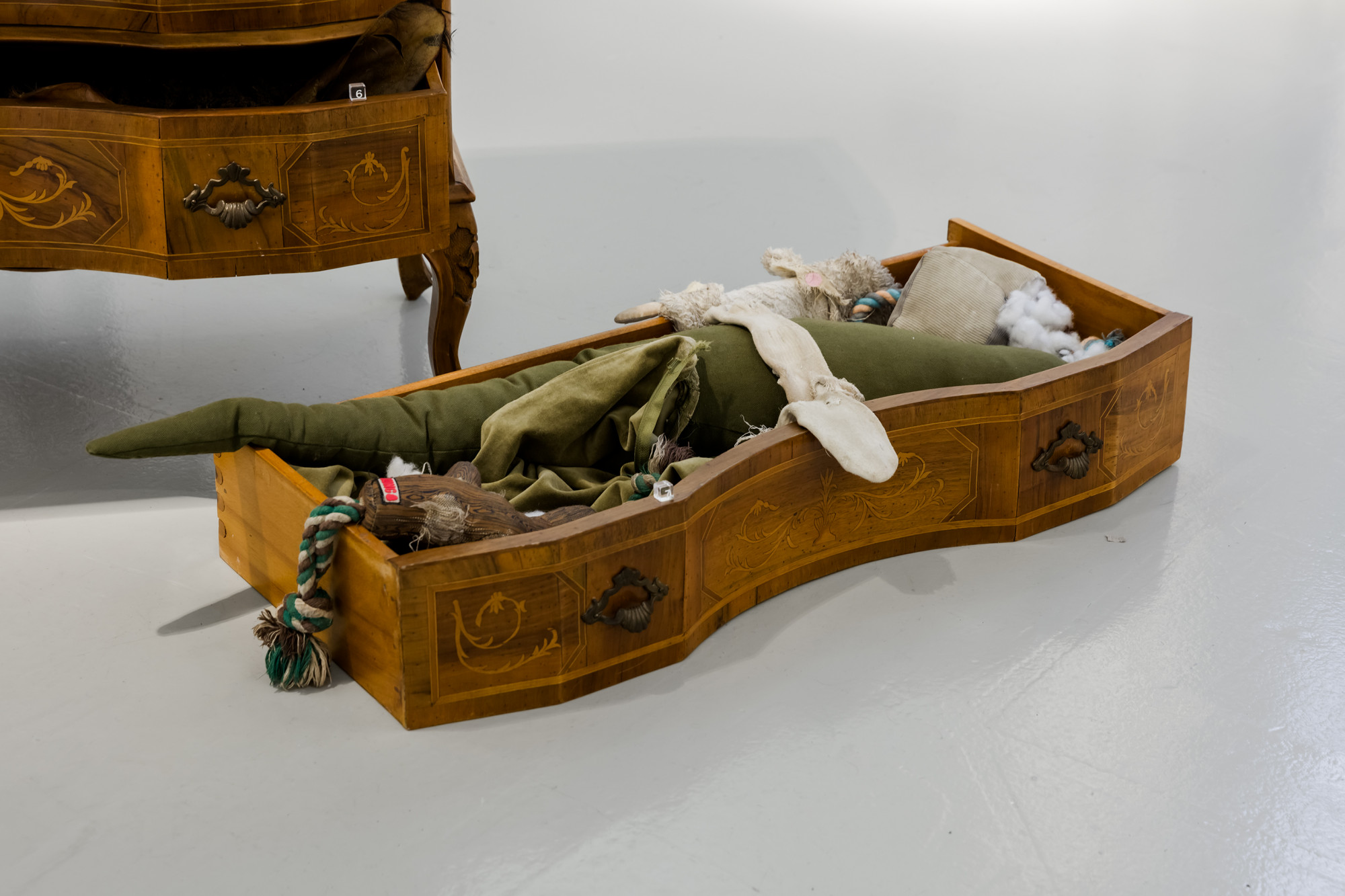
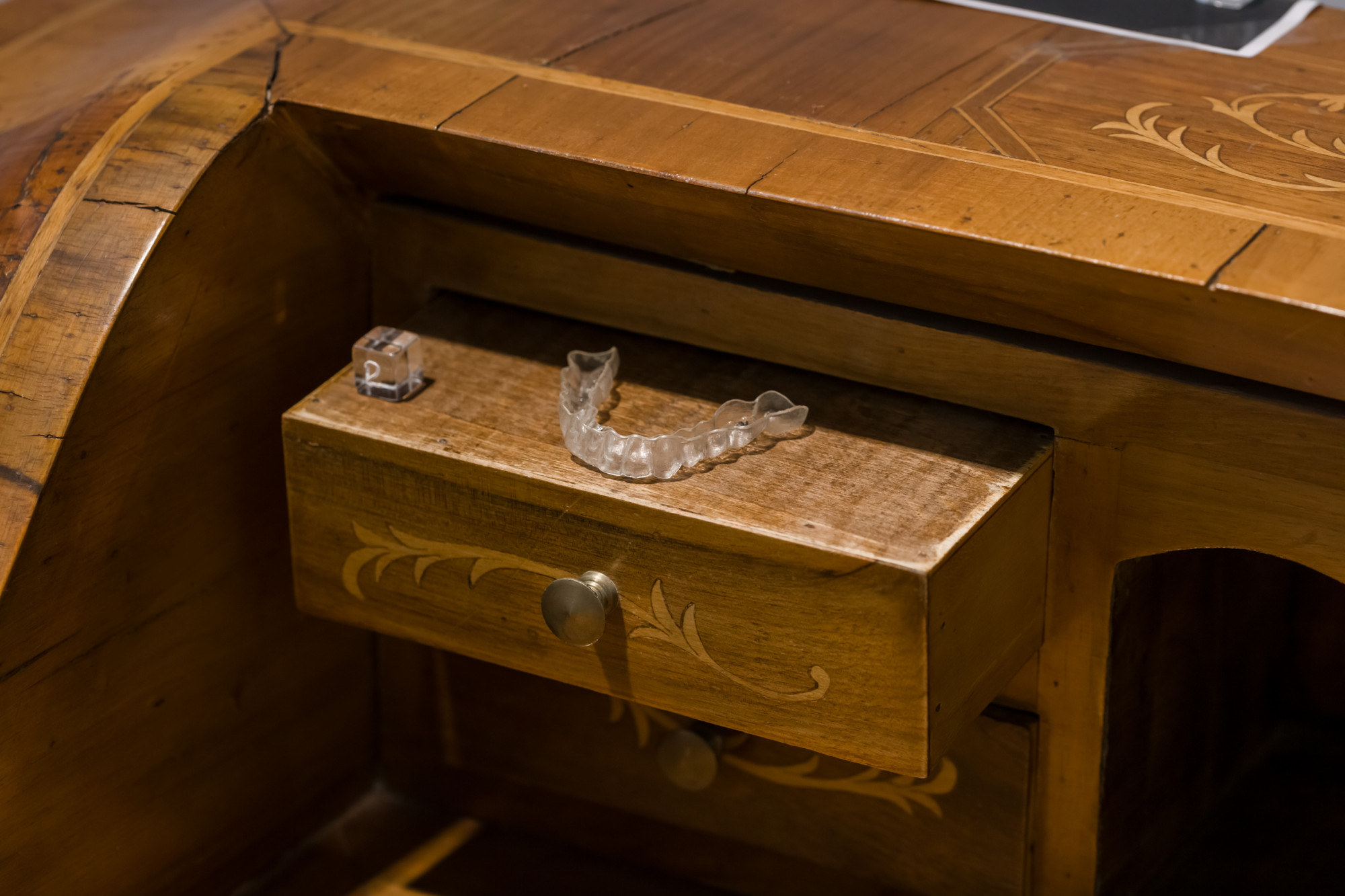
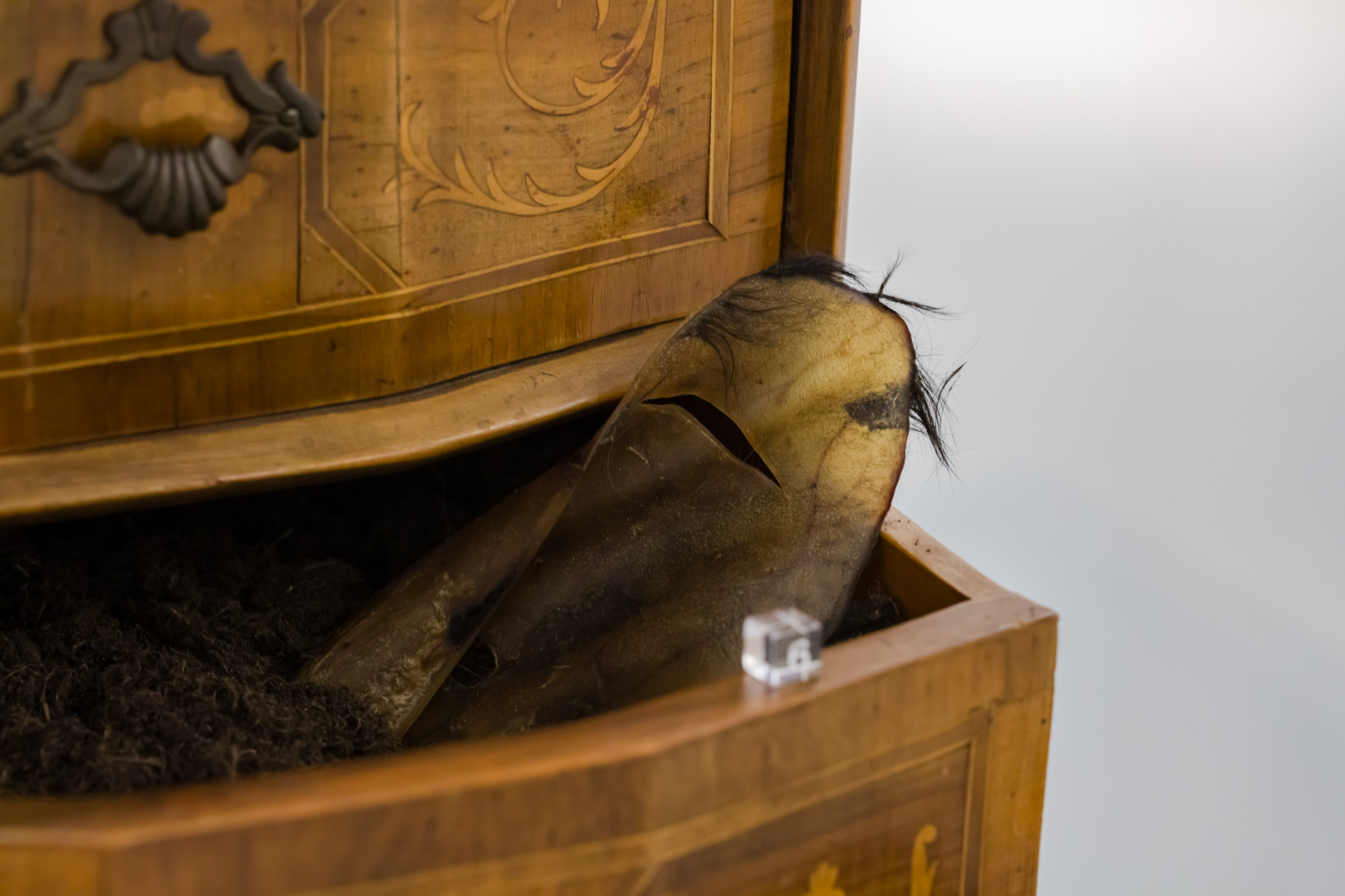


Info
curated by Alexandra-Maria Toth
Images by Jack Elliot Edwards
Location
Austrian Cultural Forum
28 Rutland Gate, London SW7 1PQ, UK


